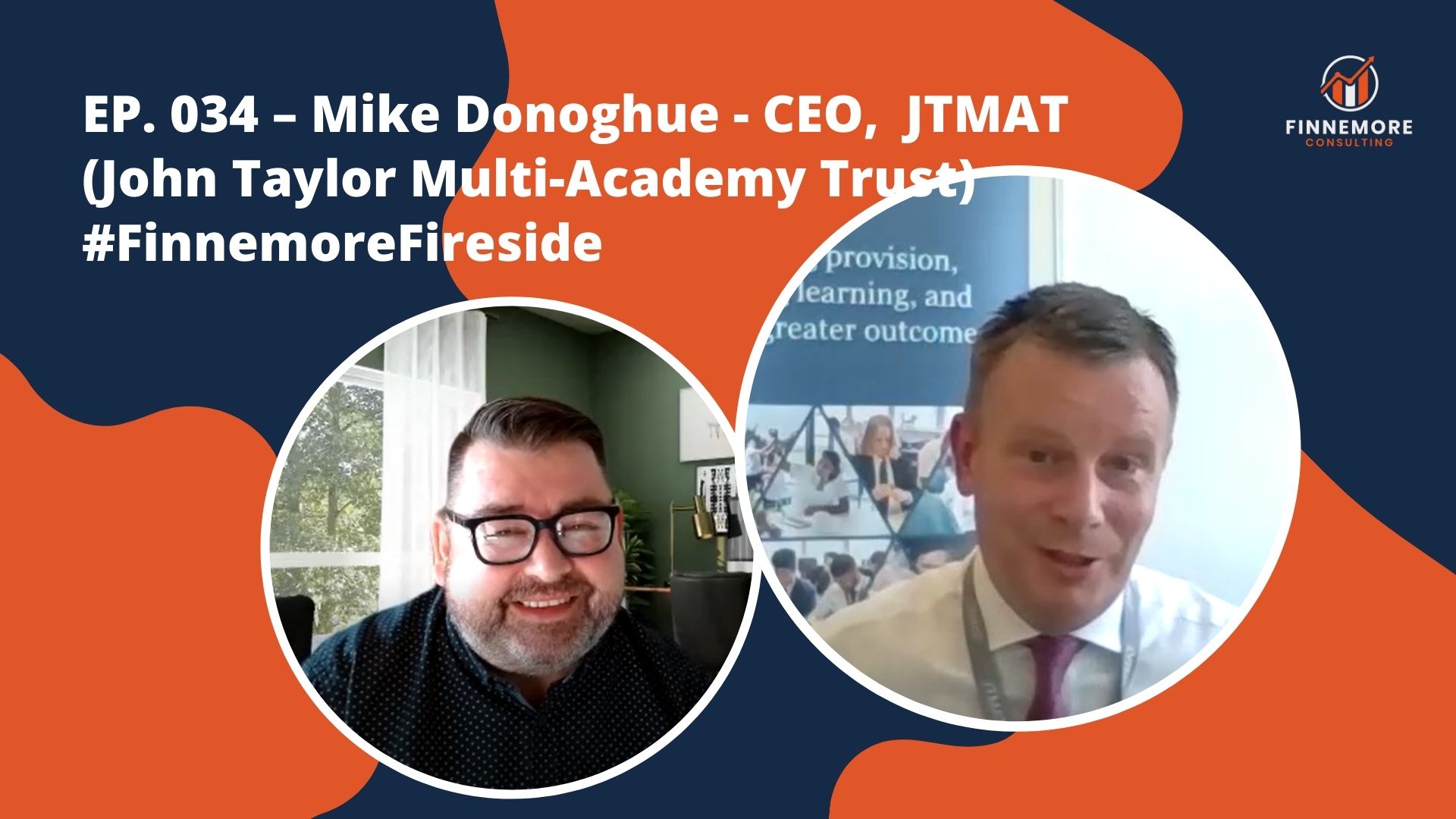Next in the #FinnemoreFireside series is this brilliant chat I had last month with Mike Donoghue, CEO of John Taylor Multi-Academy Trust (JTMAT). It was a great conversation providing lots of insight into how MATs work and what is important to directors, leaders, governors, staff and learners.
To provide some background on Mike, he was appointed Headteacher at John Taylor High School in January 2010 and oversaw the first change to ‘converter’ academy status of an ‘outstanding’ school in Staffordshire in November 2010. That school plus 14 others now lie at the heart of John Taylor Multi-Academy Trust where Mike is CEO.
In September 2014 he became an elected member of the Regional School Commissioner’s (West Midlands) Headteachers Board, was re-elected in 2017 and elected to the newly-constituted Advisory Board in 2022. Mike has also been appointed to the DfE’s Secondary Headteacher Reference Group, an advisory panel assisting with policy and strategy decision-making.
It’s an insightful conversation which includes, amongst other things:
- What it means to be a teaching school, and how fulfilling and valuable it can be
- The challenges and opportunities that come with working outside your organisation
- Growing into a successful MAT, and how do you define the perfect size
- Equality of entitlement when it comes to professional development
- The sliding scale between autonomy and regulation/structure, and how to create that balance as a MAT: compliance-driven vs excellence-driven
- Co-construction and why this is so important across the Trust
- How the Trust is very similar to a cycling peloton!
- Using evidence in staff appraisals and the concept of quid pro quo and ownership
- What Mike would like to see more of from software suppliers, and how major investment in one area can actually stymie innovation in others
- Where Mike takes his influence from on which solutions to introduce to the Trust and why


